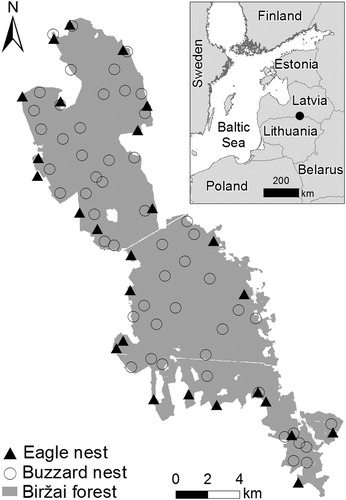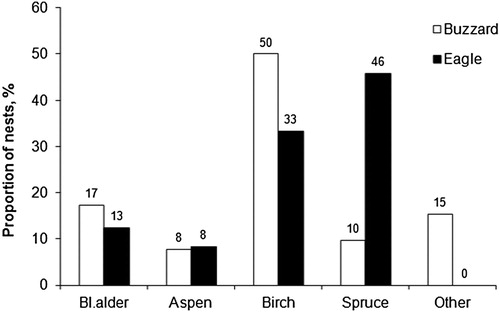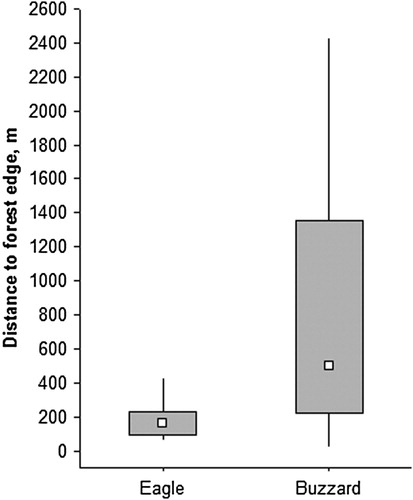Figures & data
Figure 1. Location of Biržai Forest in the region, and distribution of Common Buzzard and Lesser Spotted Eagle nests.

Table 1. Explanatory variables used to characterize Common Buzzard and Lesser Spotted Eagle nest sites.
Table 2. Descriptive statistics for the nest sites of the Lesser Spotted Eagle and the Common Buzzard in the Biržai Forest Special Protection Area.
Figure 2. Proportion of nest tree species used by the Common Buzzard (white bars) and the Lesser Spotted Eagle (black bars).

Figure 3. Distance to forest edge from the nest stands of the Common Buzzard (n = 53) and the Lesser Spotted Eagle (n = 26). The hollow square shows the median, the grey box gives the 25–75% range and the lines indicate the non-outlier range.

